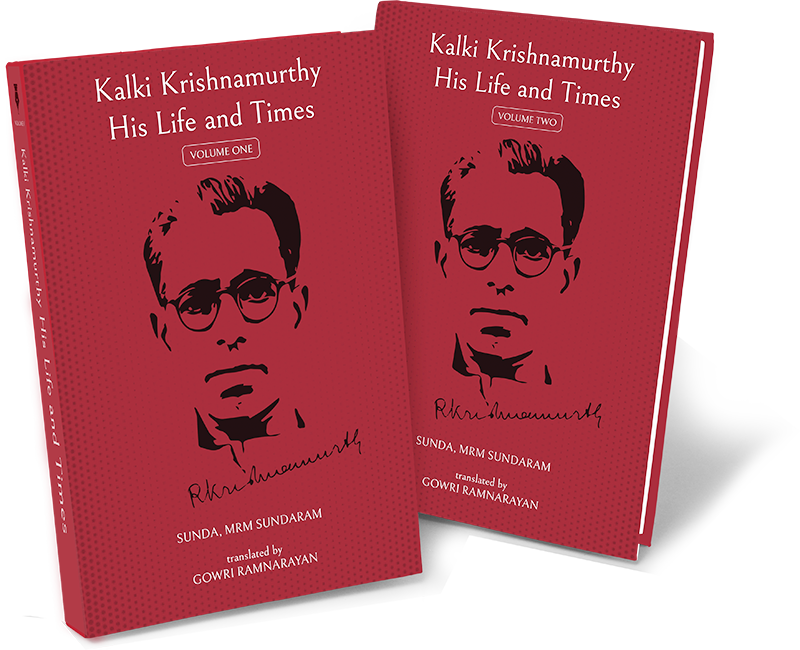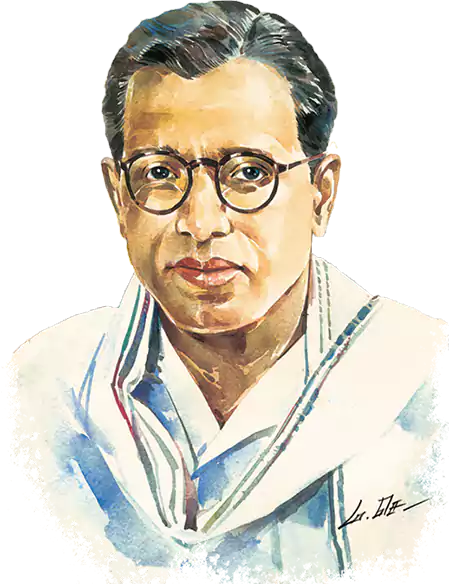
Kalki Krishnamurthy
his life and times
Gowri Ramnarayan
A translation of the biography in Tamil
PONNIYIN PUDALVAR
By ‘Sunda’ MRM Sundaram
NOTE ON THE TITLE:
Ponniyin Pudalvar, (the son of Ponni), is a reminder that Kalki was born in the region nurtured by the river Ponni, another name for the Kaveri, where the Imperial Chola monarch Rajaraja I was known as Ponniyin Selvan (Ponni’s beloved son), the name of Kalki’s spectacular cult novel.
The Project

Today, Kalki R Krishnamurthy (1899-1954) is best known for his historical fiction – Sivakamiyin Sapatham, Ponniyin Selvan and Parthiban Kanavu – recreating the glorious eras of the Pallavas and the Cholas. The conquests and art and culture of these two kingly dynasties are brought to bear on contemporary Tamil self-fashioning. Alai Osai, which the author deemed his best work, documents the turbulent years of the freedom struggle between 1934 and1947, seen through the eyes of ordinary people who are inevitably affected by the socio-political changes.
In a comprehensive biography of the iconic writer, Sunda (the nom-de-plume of MRM Sundaram, a writer known for his stint in the Tamil service of BBC) shows how, for Kalki, writing was an act of protest as part of India’s freedom movement, to assert India’s spiritual and cultural values, and to commit himself to Gandhian ideals.
Besides shining a light on an idealistic young writer’s central preoccupations, the biography unfurls a panoramic canvas of the era in which Kalki lived, of the stirring story of a whole generation or more of India’s finest who sacrificed academic pursuits and job security to plunge into the freedom struggle at the Mahatma’s call..
Sundasets Kalki’s pioneering achievements as a freedom fighter, journalist, magazine editor, political analyst,social commentator, novelist, and art critic against a backdrop of nationwide events.
Expertly led by Sunda, we dive headlong into the zeitgeist of political turmoil, social change, and reformist upheavals as Kalki did. We watch him contribute to the artistic and literary renaissance of his time, and to the growth of Tamil journalism. We witness his trust in the Mahatma, and his steadfast allegiance to his mentor and leader Rajaji (1878-1972).
Sunda crafts a unique style for his narrative.First, he eschews hagiography, and relies on meticulously researched facts, a balanced vision, and an objective tone, leaving readers free to absorb and judge for themselves.
Second, by quoting profusely from the prolific writer’s fiction and non-fiction, he creates a gripping first person story-within-the-story, an almost “autobiographical” account of his protagonist’s adventures in many spheres. This interweaving enables readers to follow not only the creative process of the protagonist’s mind, but also his evolving writerly skills, and maturing style.
Third, Sunda assembles a large cast, a who’s who of luminaries in every field–in Madras, now Tamil Nadu, and elsewhere. A medley of multiple voices – of politicians, litterateurs, fellow writers, reformists, thinkers and artists – creates the zeitgeist. The telling is sharp and piquant, offering amplespace to rivals, critics and opponents to express their censorious, at times vitriolic, views.
In sum, the biography turns the story of an individual into the saga of a nation struggling to individuate itself, the journey of a writer as he records its transformations, of a dreamer who believes that writing can charge the mind, change the world.

